Reading the book Naturally! Of course. How nature always keeps surprising us (in Dutch) by Alle Bruggink and Diederik van der Hoeven was a great pleasure to me. Even stronger, I studied it with great interest. Almost all subjects have my active interest, and they have done so for years already. A personally coloured book review.
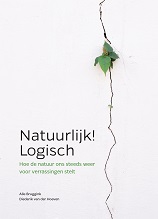 How interesting!
How interesting!
Saturday morning, November 9, 2019. There is a thud on my doormat. It cannot be the weekend edition of NRC, that is on my lap already. In the section Opinion & Debate I read the optimistic piece of the newly formed Gang of Progress. This gang consists of five philosophers, publicists and/or science journalists. They are convinced that we will be able to solve all present, seemingly unsolvable global problems, with the use of science and technology. I also believe in science and technology, but I am just a little less optimistic. According to me, we urgently need draconic measures as well. Not just lower maximum speeds, kept to by almost nobody.
How interesting! A newly published book in the mail. The authors are Alle Bruggink and Diederik van der Hoeven, well-known to me. My first thought, that they seamlessly fit into the abovementioned gang, does not live long. The gang is bent on ‘forcing’ nature, whereas the authors would like to learn from it, the subject of the book. They edit the interesting website Biobased Press and have done so for years; and they also wrote the book More with Less on precision technology. Their latest book is titled Naturally! Of course. How Nature never stops surprising us (in Dutch). The back flap tells us that the first author was a director of R&D at DSM, professor in industrial organic chemistry at Radboud University and closely involved in the development of the biobased economy; the second author is a philosopher and a science journalist. In my mind, a perfect combination for writing popular scientific books. In their new book the authors take the view that we should move along with nature, that we should take nature as an example and try to fathom it, and… above all learn a lot from it. In short, we should change our relationship to nature. They condense this ‘new relationship with nature’ in seven ‘lessons’. The book has an attractive lay-out and is adorned with a fitting image on the front page, but what about the contents?
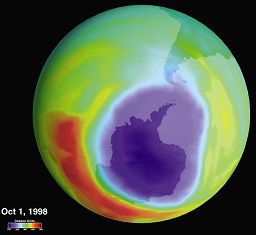
Nothing disappears
According to Lesson 1, nature’s ultimate lesson is that all phenomena are interrelated. However, there is little we can do with such a wide view and therefore, the authors formulate seven smaller, better applicable lessons. Like Lesson 1: Nothing disappears: everything we do will pop up somewhere else again. They cite well-known people to illustrate their points and take their time to give them the floor. The first one is systems thinker Ton Schoot Uiterkamp, a former fellow student of the authors; in the early sixties, all three studied chemistry at Groningen University. This seventy-five-year-old holistic thinker and professor emeritus can be seen daily, riding on his bike to Groningen University for lecturing and reading his scientific literature. System thinkers have the eye on the entire production chain. They see the world from the interrelationship of phenomena, and are used to look for indirect and unintended consequences before they launch a new discovery or newly discovered compound. They try to bring precision to the production chain, just like nature does, and strive to follow its logic. Not an easy task, and not practised by many people. The neglect of such an approach can have nasty consequences, as shown by the infamous example of CFCs, chlorofluorohydrocarbons, introduced a century ago as ‘inert’ cooling liquids in our refrigerators. Half a century later, researchers find that they are omnipresent and break down the ozone layer that blocks out the ultraviolet radiation that would have fatal consequences on us. In the nick of time, CFCs are banned in 1987.
The colourful Paul Hamm is the second player on their stage. Back in the nineties he already developed an integral solution for the problem of pig manure, a problem that haunts the Netherlands up to the present day. Hamm does take into consideration the entire production chain, but yet he was turned down. His project has been sabotaged in the Netherlands out of conservative ignorance. He sold his company to Israelis, who developed it into a thriving business. In the sixties already, he was a colourful person. I know because he was a fellow student of mine back then. During a practical he smeared on his coat a yellow substance. It even appeared on his face.
And there are more interesting examples in this chapter, like leaded petrol and the plastic soup. The authors present them with gusto, which turns this chapter into an informative and very readable text.

Nature is unbelievably smart
Lesson 2 stresses that above all, we need to have a good look at the unbelievably smart natural solutions and… copy them! Was everything in this chapter new to me? No, and yes. I did know concepts like biomimicry and bionics, but not the universe behind them. With brilliant examples from nature, the authors open up for me this universe. Biomimicry stresses copying nature’s solutions, bionics its technical application and in this book, the latter gets most of the attention.
The chapter begins with an anecdote on the discovery and development of the Velcro tape, well-known to us all. The idea for it originates in 1941. After a walk in the Alps, Swiss engineer Georges de Mestral returns home with trousers and dog covered in burdocks. He does not rest before he understands their natural mechanism, and can copy it. Mestral finds his way around conservative lack of interest, and develops the mechanism with great perseverance into a technically and commercially successful product.
Russian and British researchers have developed a method of comparison between natural and human technical solutions. Coarsely summarized, humans primarily apply ‘force’ and nature ‘smart solutions’. This needs to be changed, and it can. At technical universities, natural procedures are hardly taught. High time to change that habit. Climate control is a typical example of forceful versus smart solutions. The pinnacle of technical ingenuity here is the termite castle, nicely developed in the book. Architect Mike Pearce has studied these castles extensively, and used them as the inspiration for the design of Eastgate Centre in Harare (Zimbabwe); its energy use is a stunning 90% below that of comparable buildings.
Other subjects treated in this chapter include attaching, gluing, lightweight constructions, sharkskin swimming suits and others. I lapped it up.
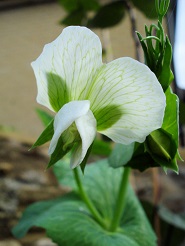
Precision through complexity
Lesson 3, in my terms, is about our Kiss principle versus the utmost precision displayed by nature in its complexity. Man reduces, nature specifies! We suppose we need radical reductions in order to unravel and understand natural mechanisms. This lesson illustrates this principle through Mendel’s research. Mendel reduced his subject of research to one single property of pea plants, the colour of their flowers. He fortunately chose properties determined by a single gene, which led him to the discovery of the basic laws of heredity. For a long time, we held the idea that he could have bent his results somewhat, but very recently this thought has been disproven.
The authors write: ‘It looks as if we had to understand the most simple situations first, before we could fathom the complex mechanisms of living nature.’ They perceive a recent movement towards holism. ‘There are many intermediate steps between ‘part’ and ‘whole’, and we have mastered much better the observation and understanding of all these intermediate steps. For instance because we have learned to observe function, and understand how this determines structure.’ They elaborate this in the example of a tree.
I know the authors, and to me they are down-to-earth and rational people, but in their description the tree becomes almost magical. And yet, their new concept of nature is based on scientific progress. Trees and plants are much more than the sum of their chemical reactions. The tree is part of a wood that has all the properties of a living creature with connected parts that communicate with each other in multiple ways. ‘In nature’s logic, precision is the result of many factors working together, of complexity.’ That could, and should, teach us a lot. We could look upon composite materials as a hesitant start. But the authors judge even the emerging and fabulous nanocomposites to be a coarse approximation of the complexity and precision in which nature couples structure to function. With fascination I read this lesson.
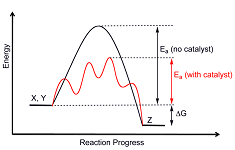
Precision through catalysis
Lesson 4 is about nature’s precision: it can steer processes down to the atomic level. Enzymes, nature’s catalysts in all its manifestations, play the main role here. We can and should learn a lot from this. I could hardly put down this chapter, whereas to me, there were hardly any new insights. A joy of recognition, a long series of déjà-vus, as if I relived my ‘research life’ at a quick pace. Catalysis in general and the Haber-Bosch process in particular (ammonia from nitrogen and hydrogen) took me back to the sixties, when I studied chemical technology at Delft Technical University.
In the seventies I researched enzymes on their ability to be used for syntheses, first in the US and then in Wageningen. In the early eighties I calculated, together with a group of students, the feasibility of the use of enzymes for the synthesis of D-(-)-4-hydroxyfenylglycine, a side chain for semisynthetic antibiotics like amoxicillin. I write about that in my Essay 1 and Essay 3.1. We performed this research on the request of, yes, Alle Bruggink, then head of scientific research at Océ-Andeno, the company later taken over by DSM. DSM’s involvement with intermediary products of pharmaceuticals started in the seventies and can largely be attributed to one single employee, the self-willed, brilliant and decorated researcher Willy Boesten. He was the first who acknowledged the benefit of using enzymes in organic chemistry and inspired my promotor, then an advisor to DSM, on the trail that led to my doctor’s degree.
Gradually, during the eighties, I employed complete living cells in addition to enzymes in order to prepare them for production purposes, in particular for pharmaceuticals. Quite in line with the paragraph The biological cell, a turn-key chemical factory on the micro scale. The lesson ends with directed evolution and the promising subject of synthetic biology. Frances Arnold, Nobel Prize winner in chemistry, is one of the leading researchers in this field. Once upon a time I invited her to give a lecture in the Netherlands. After reading this lesson, you will be up-to-date in trends in bio-catalysis.

Genetic modification, a natural phenomenon
Lesson 5, the largest one, treats the subject of genetic modification. The authors are convinced that the benefits far outweigh the disadvantages and that there is nothing unnatural about this technology. I could not agree more. It is the hobbyhorse that I rode most. More than 25 years, I took my ‘Pandora’s box’ into the country and lectured on modern biotechnology – the technology that makes use of genetic modification. According to the authors, the opponents (notably Greenpeace and Friends of the Earth) do not have any fundamental arguments. I would like to add that they are very good at kindling irrational fears. Genetically modified plants are the primary target. In 2016, this sector had a yearly turnover of $ 29 billion worldwide. But we hardly hear any objections to companies that produce medicines through genetically modified microorganisms, whereas their turnover is much larger. Just the sector that produces semisynthetic antibiotics as described has a yearly turnover of $ 140 billion. The authors nicely ask: ‘Ever run into someone who refused to swallow a pill because it had been produced through genetically modified organisms (GMOs)?’
According to the authors, genetic modification is as natural as nature itself. Even transgenesis, modification using foreign DNA, is a natural phenomenon. As an example the authors mention the cassava that was inedible at first, but became edible through a natural ‘field’ process in which it incorporated a piece of DNA from Agrobacterium. Please note that the T-plasmid of this bacterium is an important vehicle for genetic modification of plants. A recent publication shows that there is an unexpected high incidence of such transgenesis in nature itself, by infection with the T(ransfer)-DNA of the Ti-plasmid, an entirely natural process! At least thirty-nine of such naturally transgenic plants have been identified.
The authors take the examples of silk and spider silk, both consisting of proteins, as difficult to imitate natural substances with very attractive properties. Silk is soft, strong and tough. There is an ultralight artificial silk that much resembles natural silk, it is produced through genetically modified microorganisms and has successfully been used already in fashion, shoes and car parts. Spider silk is closely related to silk and is even much tougher. The genetic code for spider silk has been introduced into microorganisms as well, and these therefore produce a substance that resembles spider silk. This material has already been woven into a gold-yellow parka as a prototype. And then, spider silk genes have been introduced into silkworms. Why? There is a long-standing tradition of growing silkworms at an industrial scale, not of growing spiders, they are cannibalistic. Spider silk fibres made by genetically modified silkworms don’t need to be purified and spun, whereas we need to do so if these are produced by microorganisms.
In this lesson, the authors treat many more genetically modified organisms, of which the plants run into a lot of resistance. Golden rice is most hotly debated and most discussed one, for twenty years already. But on December 10, 2019 the first approval has been given. The Philippines was the first country to greenlight golden rice. And it’s not just engineering plants’ DNA that meets criticism, it’s also engineering human embryos… and rightly so, for the time being!
I have just a slight criticism of this lesson’s content: the brief discussion of the terms epigenetics, epigenesis, RNA and histones (p.77). Their role largely remains unclear; and also what they consist of and perform. And the last paragraph (p.91) on the effect of DNA on human characteristics could have been much more understandable with some more explanation on epigenetics. Nevertheless an instructive, pleasantly reading lesson, for me as well.
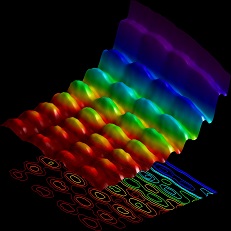
Human technology meets its boundaries
Lesson 6 is of modest length and above all a lesson in ‘human modesty’. We can infer that from the very title: ‘We will never be able to control living nature perfectly.’ Again and again, the authors stress that in fact we still know very little about how nature works. ‘Our research into nature is just beginning. It is time to be a bit more modest…’ And: ‘So far, we know very little about life in living organisms.’ Or ‘We know so little that much of what we say boils down to speculation.’ To me, this last phrase is characteristic of this chapter. It raises questions and provokes differences of opinion. The good thing about that is that it stimulates reflection and further study.
In the very first paragraph, a bold sentence strikes me: ‘OK, no life without DNA, but the most important products of that DNA, proteins and enzymes, are even much more complicated in their combinations. And they even don’t play the same game.’ Too vague an assertion, and I very much doubt it. Take for instance the interaction of histones and DNA in the nucleus of the cell, or epigenetics, the youngest biological subject that studies reversible changes in DNA, without altering sequences. These and other phenomena cause changes in the phenotype and activate or deactivate genes. ‘Infinitely’ complicated, all in all!
Nature’s ultimate lesson is that all phenomena are interrelated. Moreover, these are always ‘on the move’. That is true on the level of entire cells, entire organisms, entire ecosystems, entire communities, in short on the earth as a holistic system that is never in equilibrium. One major, complicated, unpredictable ‘game’; down to the tiniest level, where subatomic particles like electrons and protons have properties of both matter and waves and cannot be precisely located insofar as they are waves. ‘As waves they can move at almost the speed of light. […] That explains for instance how an action on one side of a major protein molecule can provoke a reaction on the other side – at a speed that would be unattainable if electrons and protons were just particles.’ Moreover, the authors suggest that the elusive quantum mechanical properties of living nature might cause the unpredictability of nature. To me, these thoughts about elementary particles are new, and possibly the most interesting aspects of this lesson on the ‘unpredictable game’ of living nature. A game that, according to me, will end only definitively in a few billion years, as life on earth will be destroyed by the earth heating up as a result of solar expansion and intensified radiation. In all its modesty, a very interesting lesson.
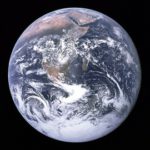
Holism as a scientific guiding principle
Lesson 7 is called: The ultimate lesson: think and act from a perception of the whole. The authors stress again that our scientific mind is coloured too often by reductionism, and that researchers still want to understand and construct nature from an understanding of its constituent parts. ‘But in nature’s logic, the whole is more than the sum of its parts. […] Therefore, we would prefer to reason and engineer from a complete insight into life’s complexity. […] Not by reducing the resource to a few simple bricks, followed by reordering them into a new complexity.’ They take the example of mother’s milk as a complex product that has often been imitated by adding together many of its components, without ever arriving at the goal of exactly reconstructing the original. ‘Maybe we should reconstruct the mammary gland,’ the authors propose as a holistic alternative.
‘Holistic research has the future, whatever it may look like in practice.’ The authors point to an emerging holism in the popularity of the term ‘organic’ that reflects a desire for an undivided nature. ‘A desire to live in harmony with nature and deal with it in a ‘holistic’ way. But we would like to inject a new meaning into terms like ‘organic’. Through innovation, and not primarily through a return to old practices.’ They judge that ‘biotechnology lends us the opportunity to produce substances almost like living nature does.’ As an example, they mention pure vanillin produced from modified yeasts.
And they discuss sustainability. This popular term suggests that we can sustain an activity without self-defeating, damaging and unintended consequences; but this is just half of what the authors have in mind. ‘Ultimately, we strive for living in harmony with nature, while retaining the blessings of prosperity. Like living without hunger, in freedom and with a certain level of conveniences. […] Therefore, we should have an eye on the whole right from the start, and act according to its logic.’ They judge that such a holistic approach can help solving major global problems, in particular those of plastic waste and climate change.
Under the heading The force of data analysis the authors ask themselves: ‘Wouldn’t we be able to attain holism from our reductionist approach, or at least approach it, if we just enlarge the volume of data?’ For the time being, the question mark is still in place.
What do these lessons teach us? We should no longer squarely oppose nature, or fight her. No, we should move along with her. ‘Like in an elegant waltz.’
Conclusion
This book review is highly personal. Because I am actively interested in almost all subjects, and have been so for many years. Also in my professional life! New to me were the special view on nature and the introduction of quantum mechanical aspects that cause nature’s unpredictability. In short, I quite liked reading the book. Even more so, I studied it with much interest.
Interesting? Then also read:
We will never be able to control nature perfectly
Can we engineer life? Golden rice
Tetraethyl lead, the scandal that never erupted
